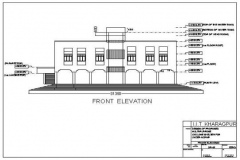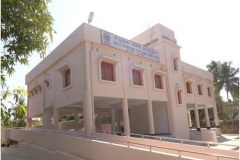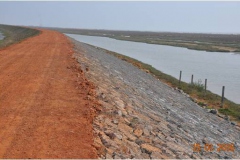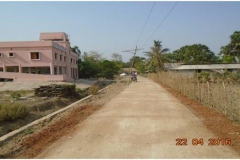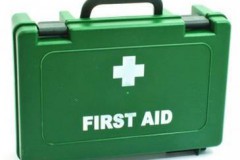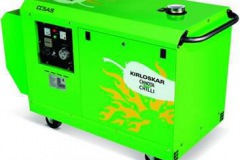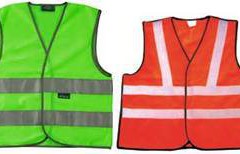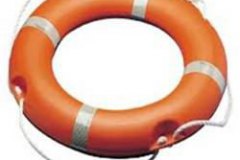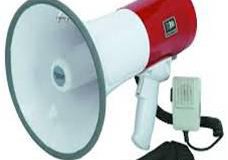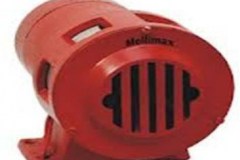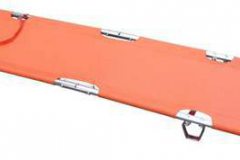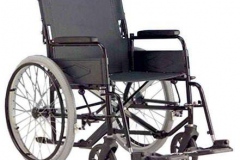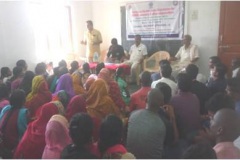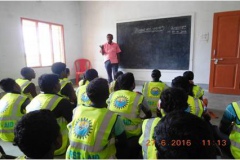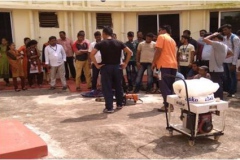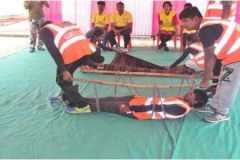National Cyclone Risk Mitigation Project
- National Cyclone Risk Mitigation Project (NCRMP) was drawn up to strengthen the structural and non-structural mitigation efforts towards reducing the risk and vulnerability of the coastal districts to cyclone-related disasters.
- Implementation of NCRMP in Odisha was approved in Phase-I of a Centrally Sponsored Scheme. The central share was being funded by the World Bank as an Adaptable Programme Loan with an International Development Association (IDA) credit.
- The Financing Agreement of NCRMP between the World Bank and the Government of India and the Project Agreement between the World Bank and the State Government were signed on January 14, 2011. The Project Agreement became effective on March 30, 2011 and the project was formally launched on April 25, 2011. The project closing period was October 2017 but the project actually closed on 31.03.2019.
- National Disaster Management Authority (NDMA), Govt. of India, New Delhi was the Project Management Unit (PMU) and responsible for overall implementation as well as coordinating implementation of project activities.
- OSDMA was the Project Implementing Units (PIU) and was responsible for overall monitoring as well as coordinating the execution of project activities and time to time reporting to PMU & World Bank.
- Rural Development Department and the Department of Water Resources of Govt. of Odisha were the Line Departments to execute the Multipurpose Cyclone Shelter, Godown-cum-shelter, Shelter connectivity (Approach Road) and Saline Embankment works.
- The project was divided into four components, namely :
Component-A:- Early Warning Dissemination System (EWDS)-Last Mile Connectivity
Component-B:- Construction of Cyclone Risk Mitigation Infrastructure like Multipurpose Cyclone Shelters (MCS), Approach Roads, Saline Embankments, Shelter level equipment
Component-C:- Shelter level capacity building (Technical assistance for capacity building on hazard risk management by NDMA and National Institute of Disaster Management (NIDM) and the shelter level capacity building activities were carried out by OSDMA)
Component-D:- Implementation Assistance (Project Management and Monitoring applicable to all implementing agencies )
The total financial outlay of the project was of Rs.653.79 crore which was later revised to Rs. 695.97 crores with earmarked fund for component A, B, C & D. Components A, C and D are fully funded by the Central Government. However, Component-B (Rs. 586.72 crore) is being funded by the Centre and the State on the ratio 75:25. The detail revised estimates is placed below:
| Sl. No. | Components | Sector | Revised Project Estimation (In crore) |
| 1 | Component-A
100% central share |
Early Warning Dissemination System | 68.86 |
| Sub Total | 68.86 | ||
| 2 | Component-B
Cyclone Risk Mitigation Infrastructure by State Govt. ratio-75:25 |
Construction of Multipurpose Cyclone Shelters/ Godown | 181.90 |
| Shelter connectivity | 185.64 | ||
| Raising and strengthening of Saline Embankment | 203.78 | ||
| Shelter Level Equipment | 15.40 | ||
| Sub Total | 586.72 | ||
| 3 | Component-C
Shelter level capacity building by OSDMA 100% central share |
Shelter level Capacity Building on Disaster Management of 154 NCRMP MCS & 162 NCRMP(AF) MCS | 4.98 |
| 4 | Component-D
100% central share |
Implementation Assistance | 35.41 |
| Including Unallocated contingency (Rs.11.62 cr.) | |||
| Grand Total | 695.97 | ||
Brief status of the project is as follows:
Component-A : Early Warning Dissemination System (EWDS)-“Last Mile Connectivity”.
The Project is being implemented in 22 blocks under 6 coastal districts (Balasore, Bhadrak, Jagatsinghpur, Kendrapara, Puri & Ganjam) with a view to establishing a fool-proof communication system to address the existing gap of disseminating disaster warning up to the community level. The cost of the project is 100% grant in favour of the State by Government of India through World Bank. AMC cost for 3rd 4th and 5th year to be borne under SDRF. Office of Special Relief Commissioner, Odisha was assigned with implementation of the project.
The EWDS comprises of the following technologies:
i) Satellite Based Mobile Data Voice Terminals (SBMDVT)- 2 sets each to be provided at the State Emergency Operation (EOC) Centre and 6 District EOCs having multi-faceted communication facilities like Voice / Video/ Data/ E-mail/ Fax, etc.
ii) Digital Mobile Radio (DMR) to be provided to State Emergency Operation Centre, 6 District Emergency Operation Centres and 22 Blocks, 14 Fish Landing Centres and 114 Alert Siren Tower locations.
iii) Mass Messaging System at the State EOC. This will facilitate sending warning messages through SMS to all mobile phone subscribers in a particular locality/ area likely to be affected by a threatening disaster.
iv) Alert Siren System at 122 locations near the coast (within 1.5 km approximately) to cover Tourist Places, Fish Landing Centres and coastal habitations. This system will be helpful for communicating both cyclone and tsunami warnings to the coastal population directly from the State Headquarters.
v) Universal Communication Interface (UCI) to be installed in the State EOC for interoperability among different communication technologies like VHF/ HF/ TETRA/ Ham Radio/ DMR/ Mobile Phone/ Landline, etc.
National Disaster Management Authority (NDMA), Ministry of Home Affairs, Govt. of India, has engaged the Telecommunications Consultants India Ltd. (TCIL) as a Technical Consultant. The work executed through International Competitive Bidding. The work was awarded to the lowest bidder M/s L&T with approval of the World Bank and proper examination by the Technical Committee/ TCIL, final approved by the Govt. of Odisha.
Component-B : Cyclone Risk Mitigation Infrastructure
The project has been implemented under the overall supervision of the State Project Steering Committee in close coordination with the State Government Departments concerned and the Collectors of the project implementing districts. The multipurpose cyclone shelters including godown-cum-shelter buildings and shelter connectivity (approach road) has been implemented by the Rural Development Department. The raising & strengthening of saline embankments has been implemented by the Water Resources Department of the Government of Odisha. The quality monitoring of the projects has been conducted by OSDMA by engaging a Third Party Quality Auditor (TPQA).
Status of the works:
| Type of Work | Present status |
| 154 Nos. multipurpose cyclone shelters (MCS) [including 5 Godown-cum-shelter] | All completed |
| 143 Nos. Approach Roads of 218.500 km length | All completed |
| 12 Nos. Saline Embankment Works of 58.225 km length | All completed |
Multi-purpose Cyclone Shelter:
Keeping in view the Disaster Management Policy of the State, need assessment for construction of cyclone shelters was conducted by the Indian Institute of Technology, Kharagpur (Bhubaneswar branch) in the six coastal districts of the state within 10kms from the coastline. The team of experts of IIT, Kharagpur mapped the entire area and suggested construction of cyclone shelters taking into account the physical and socio-economic vulnerability of the locality and availability of shelters space. The vulnerable village has been identified by the technical team of IIT, Kharagpur after detail study. But, the exact locations for shelter buildings have been selected by the Collector of the district on the basis of following considerations:
- The sites are mostly inside the existing school premises or adjacent to school.
- The sites are a piece of Government Land/ public land without any encumbrances and suitable for construction.
- The sites have sufficiently wide access, in which approach roads are developed..
- All MCS are constructed in strategic locations above the HFL and about 3000 sft plinth area.
- Separate hall for men and women, Separate toilets for men and women, One extra room to be used for sick/ labour room, One store room, ramp of 1:12 slope for persons with disability, drinking water supply through submersible pump, provision of electricity fittings and connected with electricity etc.
Due to construction of the MCS under the project, about 154000 people will take shelter during any eventuality.
Shelter level equipment:
As per the standard practice of OSDMA, a number of shelter level emergency equipment have been provided to each completed shelter, which are being used at shelter level during disaster. These equipment can also be utilized for income generating purposes at normal times. The equipment include generator sets, inflatable tower lights for night time disaster management, power saws, search and rescue equipment, First-Aid kit, free kitchen utensils, totaling more than 50 items. A list of such equipment is given below.
| Sl.
No. |
Items | Description | Unit per Shelter |
| 1. | Lifebuoy (Ring Type) | SOLAS/ IRS approved | 5 Nos. |
| 2. | Life Jacket (Adult) | Assorted Size | 5 Nos. |
| 3. | Fluorescent Jacket – 50 Nos.
(25 + 25) |
25 Reddish Orange &
25 Lime Yellow |
50 Nos. |
| 4. | Safety Shoes | (Hard Toe Industrial) 10 Pairs | 10 pairs |
| 5. | Hand Gloves | (Ordinary working) – 10 Pairs | 10 pairs |
| 6. | Safety Helmet (Industrial) | 10 Nos ISI mark | 10 Nos. |
| 7. | Rain Suit- 10 set | (Rubberized Polyester Fabric) | 10 Sets |
| 8. | Foldable Stretcher | (208L x 54.5 W x 13 HCM) | 2 No. |
| 9. | Dari | ( 12ft x 12 ft) | 2 Nos. |
| 10. | Inflatable Tower Light | (Recoil start portable A.C. Generator set) | 1 No |
| 11. | Telescopic Tower Light (LED type) | Base light-420x with DG set | 1 No. |
| 12. | Nylon Rope (12 mm) | 12 mm dia 50 mtr length rope | 2 Nos. |
| 13. | Karnamental Rope | 12 mm dia 50 mtr length rope | 2 Nos. |
| 14. | G.I. Trunk | Size:6ft x 3ft x 2.5ft | 1 No. |
| 15. | Wall Support Extension Ladder | (Aluminum) 35 ft. | 1 No. |
| 16. | Steel Almirah | (78”H x 36”W x 19”D) | 1 No. |
| 17. | Steel Rack | (IS 226/1975, size 6.5ftH x 3ftL x 2ft) | 1 No. |
| 18. | Plastic Molder Chairs | (Size: 548L x 555W x 850H mm) | 10 Nos. |
| 19. | Handheld Tools | i. Spade- 2 No.s
ii. Pick Axe- 2 Nos. iii. Crow Bar- 2 Nos. iv. Large Axe- 2 Nos. v. Hand Saw- 2 Nos. vi. Shovel- 2 Nos. |
1 Set |
| 20. | Solar Lantern | (Portable Type) | 2 Nos. |
| 21. | Fire Extinguisher 4.5 Kg | (Co2 type) | 1 No. |
| 22. | Handheld Megaphone | 1 No. | |
| 23. | Handheld Search Light | Led Type | 1 No. |
| 24. | Siren (Electrical) | (Electric Siren 220/250 volt single phase) | 1 No. |
| 25. | Radio | (Reputed mark) | 1 No. |
| 26. | Notice Board with Kitchen net covering and locking wooden | (Size: 120 x 90 cm) | 1 Set |
| 27. | First Aid Box with materials and manuals | (Size of Box: 14” x 9” x 4”) | 1 No. |
| 28. | Free Kitchen Utensils | ( 22 type Annexure Attached) | 1 Set |
| 29. | Water Filter | Aquatech | 4 Nos. |
| 30. | Power Saw (Chain Saw) | ISI marked Standard make | 2 Nos. |
| 31. | Wheel Chair | Dura Hard Cushion Wheelchair | 2 Nos. |
| 32. | Tarpaulin | Standard Size | 2 Nos. |
| 33. | Diesel Generator | 5kv powered silent DG set | 1 No. |
| 34. | Dustbin 120 ltr | (2-Green & 2-Blue) | 4 Nos |
| 35. | Dustbin 100 ltr With stand post | (1-Green & 1-Blue) | 2 Nos |
| 36. | Dustbin-110 ltr- Trolley | 1 No |
Approach Roads:
It is the motto of the project that all shelter buildings taken under NCRMP (Phase-I) should be connected with an all weather concrete road. So, as per the decision, all MCS constructed under the project have been connected with approach roads. It is for kind information that some approach roads are newly taken and some existing roads are taken towards strengthening. Finally, 143 numbers of approach roads under NCRMP have been constructed.
Saline Embankments:
Due to inundation of saline water brought about by tidal surges, there is loss of life and damage to property. Existing saline embankments in the coastal districts of Odisha cannot presently protect the countryside from high tidal surges. To make these embankments effective against cyclone surge of 50 years return period, raising and strengthening of these embankments was necessary. The embankments are also protect the area from rivers. The sluices would help in evacuating the storm water from the cultivated fields. Under the NCRMP, 12 numbers of saline embankments have been raised and strengthened with a length of 58.225 Km along the Bye of Bengal in Kendrapara, Jagatsinghpur, Puri and Ganjam districts. Further, renovations of 52 numbers of sluices have also been done. For better connectivity including ease of inspection of the embankment, the embankment top has been provided with WBM crust as per specification of MORT & H. Due to this raising & strengthening of saline embankments, about 67840.44 Hector land area would be protected from saline erosion and about 175300 people would be benefitted.
Component-C :
Shelter Level Capacity Building under NCRMP & NCRMP (AF)
- As per the project requirement, the capacity building activities have been combinedly carried out in 316 MCS under both the projects (154 -NCRMP + 162 -NCRMP-AF).
- Cyclone Shelter Management & Maintenance Committees (CSMMC) have been formed in all 311 MCS and 5 Godown-cum-shelters under NCRMP are being Managed & Maintained by concerned District Administration.
- Shelter level social mobilization done in all 316 MCS (including 5 Godown-cum-shelters)
- Shelter level taskforce identification done in 311 MCS
- Joint bank account opened in 311 MCS (Godown-cum-Shelters have their DEOC accounts)
- Registration of 311 CSMMCs have been done
5 types and 11-day shelter level capacity building training programme have been completed in 316 NCRMP shelters during 2018-19. The trainings are:
- 1 day- Orientation on shelter management to CSMMC members, stakeholders & other volunteers.
- 4 days- Search & Rescue training to 25 shelter level taskforce volunteers,
- 2 days-First Aid training to 25 shelter level taskforce volunteers,
- 2 days-Shelter record keeping training to CSMMC members, and
- 2 days- Operation & maintenance of shelter level equipment to taskforce volunteers & CSMMC member
Table of people gone under training:
| Sl. No. | Activity | Number of person trained |
| 1. | Training of Trainers (ToT) | 280 |
| 2. | Orientation of shelter management & maintenance | 15800 |
| 3. | Training on Search & Rescue, First Aid & operation of shelter level equipment | 15800 |
| 4. | Training on shelter level recordkeeping | 9400 |
“Kala Jatha” (street play)
Similarly, awareness campaign on important of the multipurpose shelter buildings, there use, effective management, maintenance etc., have been conducted in all shelter villages under the project through “Kala Jatha” (street play). This “Kala Jatha” has impacted greatly among the community living in the shelter villages. Now, they all know its important and using, management, maintenance etc. of the same MCS building. Apart from the above some IEC materials have been published and distributed to the MCS under the project as well as block and district administrations.
Towards the sustainability of the Saline Embankments there are 47 “Luna Bandha Surakhya Samittees” (LBSS) have been formed in 47 villages those gifted their land towards raising & straitening of the Saline Embankments and residing along the embankments. The ‘Samittees’ have been aware on up-keeping & maintenance of the Saline Embankments towards its sustainability. Each ‘Samittee’ has been provided with Rs.5.00 lakhs each towards ‘Community Development Fund’. The same amount has been fixed deposited in a nationalized bank nearer to the village in the name of the ‘Samittee’ and the interest generate from the same would be utilized towards minor repair of the embankment and capacity building activities etc.
Project Benefit
- Overall impact of the disaster considerably reduced partly because of erecting more number of EWDS in strategically located coastal villages.
- The vulnerable community have benefitted from the multipurpose cyclone shelters and approach roads constructed under NCRMP as it has not only improved the disaster resilient infrastructures in their villages for regular use, but also facilitates for other social use during normal time as well as movement of ambulances/ other relief vehicles in times of disasters.
- The construction of saline embankments has also facilitated protection of villages, agricultural land and individual property from saline water during disasters.
- Training & awareness on Disaster Management Skills, Emergency Mock Drills/ Exercises etc. have all capacitated the beneficiary communities to take appropriate action at the time of disaster.
- The project has strengthened the coping skills of the vulnerable community in challenging situations and helped them to deal with the matters effectively and efficiently.
- All this has resulted over time is not only reducing people’s fears of living close to the sea but also reducing largely the loss of life, loss of assets, loss of livestock, and through emergency services, secured rescue, relief and rehabilitation services at a faster pace.



